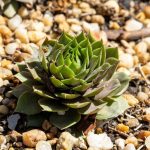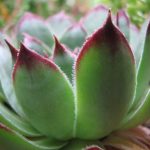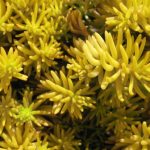If you’re aiming to create an eye-catching xeriscape, here we present some unconventional succulent ground cover plants for your consideration.
In the realm of landscaping, succulent ground cover plants stand out as a fantastic option, particularly in warm climates. These plants can thrive with minimal maintenance once they are well-established in your garden.
A diverse range of succulents are available, including dwarf varieties. The showcased selections in this article span from low-growing species to those offering ground coverage with varying heights. These plants flourish in well-drained soil and demand limited watering. Adequate water supply in spring and reduced to zero watering in winter are crucial for their growth.
The list features familiar succulents like hens and chicks alongside lesser-known choices that might surprise you. Succulents enrich any garden with their vibrant lime green foliage and a spectrum of flower colors ranging from white to beautiful magenta. While they showcase their full beauty in spring, many succulents retain their allure even in winter.
This compilation not only serves as a source of inspiration but also equips you with the necessary knowledge to explore the captivating realm of succulents. It will aid you in identifying the most suitable succulent to serve as a ground cover in your landscape.
Handpicked Succulent Ground Covers
Upright Myrtle Spurge
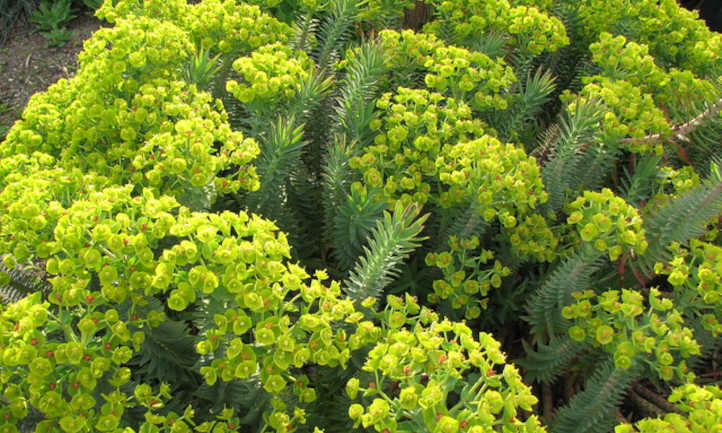

Upright myrtle spurge (Euphorbia rigida) presents an intriguing appearance with its blue-green spiral leaves that give rise to large clusters of tiny yellow star-shaped flowers. Originating from Europe and southwest Asia, this plant thrives in zones 7-11. While it can reach heights of up to 24 inches, it remains an undemanding plant that enjoys full sun, minimal water, and well-draining soil. Resistant to deer, tolerant to salt, and resilient against numerous pests and diseases, this plant requires caution as all its parts are toxic and its milky sap can cause skin irritations.
Gold Tooth Aloe
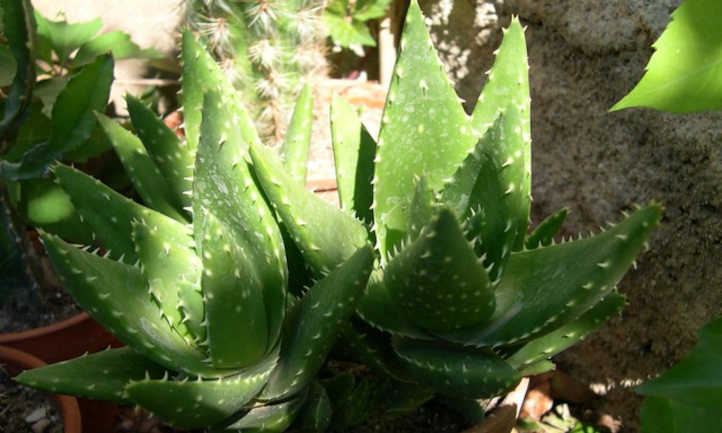

For a dash of diversity in your landscape, opt for low-growing succulents such as gold tooth aloe (Aloe nobilis). These versatile plants flourish in zones 9-10 and can withstand temperatures as low as 20 degrees Fahrenheit. Sporting tubular orange flowers that attract butterflies, this plant starts flowering in late spring and continues through summer. Gold tooth aloe forms an appealing rosette pattern with short, vivid green leaves that may turn orange in full sun or under stress, reverting to green in shaded conditions. With its ability to multiply rapidly through offsets, this aloe fills spaces swiftly.
Hens and Chicks
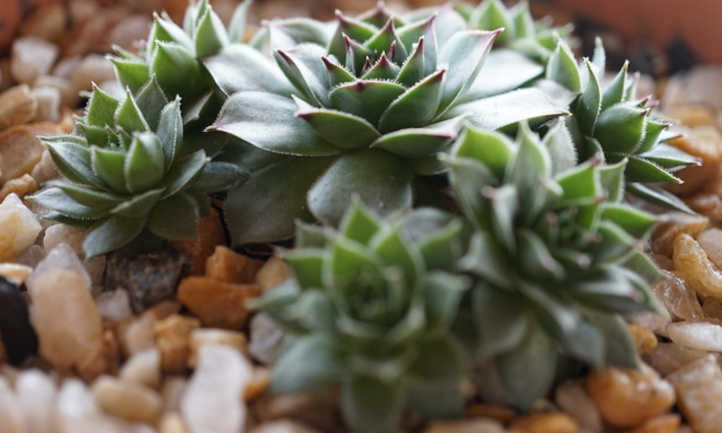

Sempervivum tectorum, commonly named hens and chicks, serve as popular succulent ground covers ideal for rock gardens and arid regions. Indigenous to Europe and Africa, this succulent now thrives worldwide, enduring cold temperatures within zones 3-8. While it possesses succulent characteristics, it can withstand cold spells. Despite their slow growth, the attractive rosette structure of each ‘hen’ produces accompanying offset rosettes known as ‘chicks’. After approximately three years or under duress, the hen may develop a spiked, upright stamen bearing white or yellow flowers. Following the production of flower stalks, the primary rosette dies off.
Candelilla
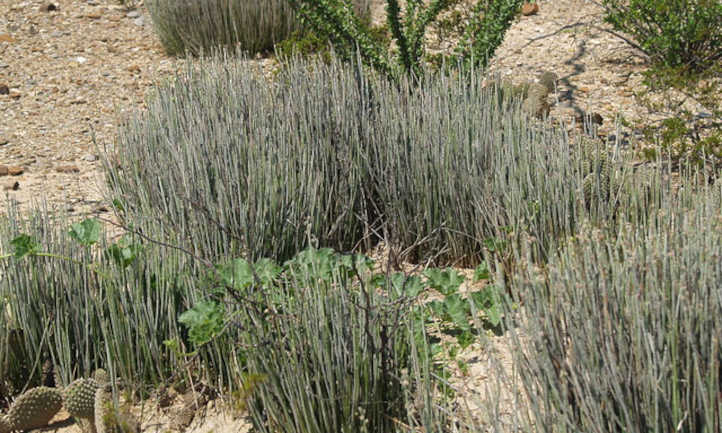

Enhance the vertical dimension of your garden with candelilla (Euphorbia antisyphilitica). This erect succulent boasts straight, waxy stems that interconnect to form a spreading bush. Scaling heights of up to 2 feet and spreading three feet wide, a cluster of candelillas can endure drought, heat, and even cold weather of 10 degrees Fahrenheit. Placing them in partial shade does not hinder their mature size compared to full sun exposure, provided they receive around 6 hours of sunlight daily. Sporting small cream-colored flowers with pink centers that blossom from May and continue into summer, this plant’s waxy sap finds utility in soap, candle, and other product manufacturing.
Rock Purslane
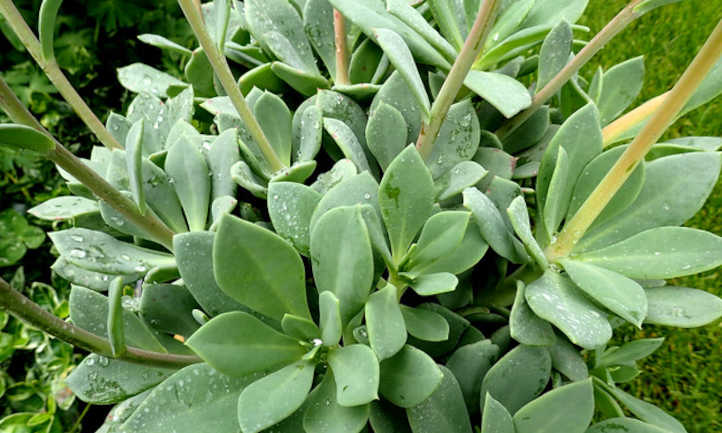

Landscaping with a semi-erect plant that forms a dense mound is easy with rock purslane (Calandrinia spectabilis). This choice features narrow grey-green leaves and vibrant magenta flowers blooming throughout summer. The plant thrives in full sun, is drought-resistant, and hardy in zones 9-11. In colder climates, treat it as an annual or propagate through cuttings for container gardening.
Peruvian Apple Cactus
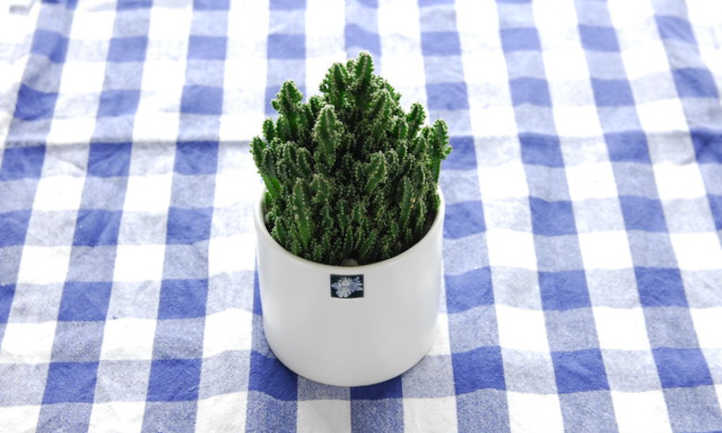

Columnar in shape, the Peruvian Apple Cactus (Cereus peruvianus) can reach up to 30 feet tall and 6 inches in diameter under favorable conditions. With a preference for full sun and moderate watering, this cactus adapts to zones 8-11, also tolerating partial shade with bright light. Donning blue-gray columns with 3-5 spiny blades, it blooms yellow to white flowers for a single night, transforming into edible fruit if pollinated early.
For more details: Peruvian Apple Cactus
Ghost Plant
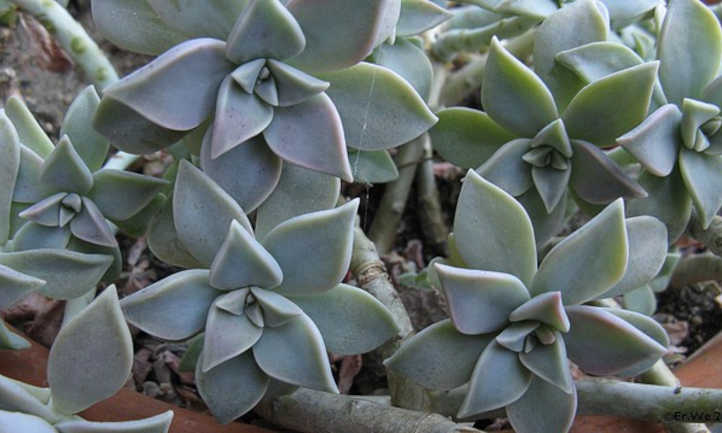

Providing a striking appearance with its whitish hue, the ghost plant (Graptopetalum paraguayense) changes colors, making it a delightful ground cover from full sun to partial shade. In summer heat, leaves display pink undertones, while in shade, blue-gray leaves enhance the landscape. Preferring zones 7-13, this plant grows small yellow spring flowers, maintaining an average height of 12-24 inches and width of up to 20 inches.
Blue Chalksticks
Senecio serpens, commonly known as blue chalk sticks, are resilient ground covers thriving in USDA zones 10-11. Originating from Africa, their striking blue-green narrow leaves sport a powdery texture. When basking in full sun, these plants can grow up to a foot tall with a spread of 2-3 feet. In filtered shade, their size decreases, making them perfect for containers if direct sunlight isn’t available. Blue chalk sticks, although they don’t bloom, are prized for their unique foliage. Resilient even against extreme heat, these plants are excellent for rock gardens and fire-wise landscaping. Additionally, they are deer and rabbit resistant.
For further information, explore: Blue Chalksticks
Parry’s Agave
Parry’s agave (Agave parryi) is a medium-size species that forms clumps up to 3 feet wide and tall. Thriving in full sun and well-drained sandy or loamy soil, this agave, with its grayish-blue coarse leaves lined with spines, is native to North America. Suitable for hardiness zones 7-10, it withstands temperatures as low as 10 degrees Fahrenheit, typical of cold desert regions. During early to late summer, it produces dazzling orange flowers, ranging from light yellow to gold, adding to its appeal. Once established, Parry’s agave is low-maintenance.
Resin Spurge
Resin Spurge (Euphorbia resinifera) resembles a cactus with spines along its sides, indigenous to Africa but flourishing in USDA zones 9-11. The light green upright columns of this succulent thrive in sunlit areas. Growing in clumps, it reaches a mature size of three feet in height and five feet in width. The inner sap is toxic, and the plant blooms vibrant flowers along its spines under suitable conditions. Resilient to heat and low water needs, it’s an ideal addition to xeriscaped gardens.
Royal Dewflower
Drosanthemum speciosum, known as royal dewflower, serves as an excellent ground cover option, forming a colorful carpet of gray-green foliage adorned with purple, pink, or red flowers. Thriving in USDA zones 9-11 and preferring full sunlight, this plant can withstand temperatures as low as 20 degrees Fahrenheit, growing up to 12 inches in height and spreading three feet wide. Tolerant of minimal foot traffic, its rooting ability makes it a quick spreader once established in bare soil.
Frequently Asked Questions
Q: Are succulents suitable for ground cover?
A: In habitats with abundant sunlight and warmth, such as low desert regions, succulents excel as ground covers. Optimal conditions for succulent ground cover include frost-free environments, making them an unconventional yet ideal choice for xeriscaping.
Q: What is the most low-maintenance ground cover?
A: Stonecrops and sedums are excellent low-maintenance ground covers, thriving in extreme heat with minimal watering. Certain varieties tolerate frost conditions. Ice plant also serves as a durable year-round ground cover option.

